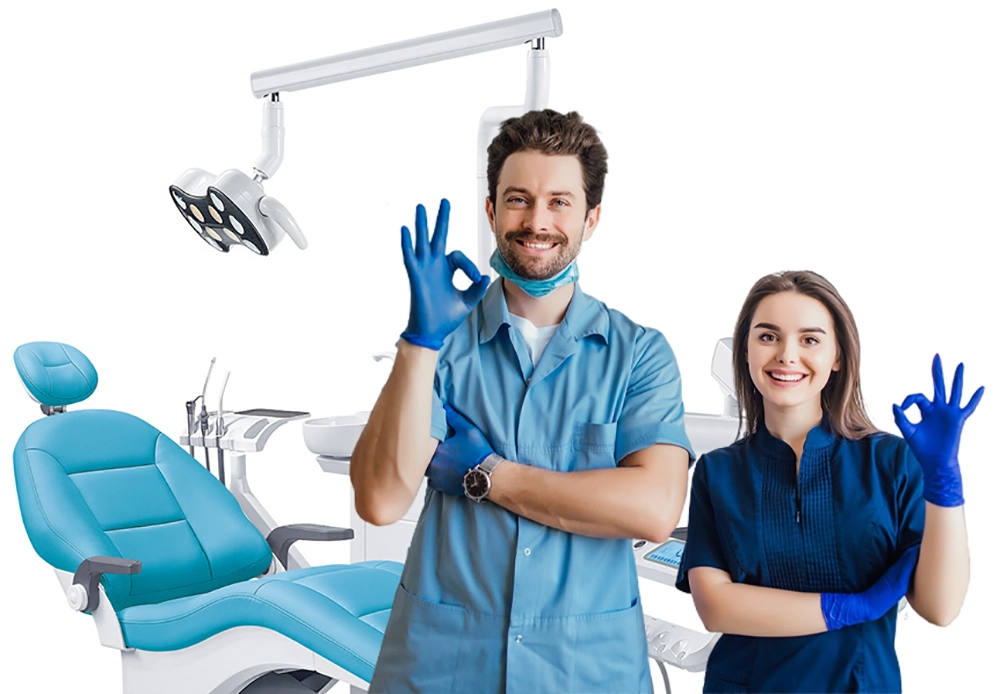
Instant Orthodontics | Sherman Oaks & Los Angeles
Meet With Us!
If you are looking for a fast way to significantly improve your smile, you may want to consider this option. Instant Orthodontics simply means correcting crooked teeth, short teeth, or discolored teeth with non-invasive porcelain veneers and dental crowns. It provides dramatic improvements to your smile without the use of uncomfortable metal braces
Many adults with minor imperfections in their teeth alignment would like to correct their teeth, but don’t feel the minor issues are worth the hassle and discomfort of traditional braces. Adults also are often unwilling to undergo treatment with metal braces.
You may be planning on getting a complete series of porcelain veneers to cover all your teeth that show when you smile. In this case, you can use veneers to impressively whiten your teeth. Instant Orthodontics is quick and takes less than two weeks instead of years compared to traditional braces. In addition, it is permanent and your teeth can become much whiter, and have the most ideal shape almost instantly.
Are considering improving the appearance of your smile with Instant Orthodontics in Los Angeles?
If your answer is yes, then you want to work with a cosmetic dentist whose standards are as high as yours. You need a cosmetic dentist with cutting-edge training and experience in porcelain veneers cases.
At LA Dental Experts, our cosmetic dentist have trained at multiple prestigious clinics with Best Cosmetic Dentist in Beverly Hills, and have extensive experience using porcelain veneers to achieve great smiles.
To learn more about instant orthodontics & porcelain veneers, and how our cosmetic dentist uses them to reshape your smile, please schedule a consultation at LA Dental Experts today.
Sometimes one procedure alone may not be enough to give you the smile you always dreamed of. Depending on your unique dental issues and needs, you may want to consider a more extensive treatment plan to accomplish your aesthetic goals. A smile makeover consists of a combined set of treatments designed to resolve all of your cosmetic dentistry, needs so that you can achieve the most beautiful & dazzling smile you’ve always wanted.
What Are You Waiting For...
Make an Appoinment
Schedule your consultation today and take the first step towards personalized care. Our easy-to-use online appointment system ensures you get the attention you need at your convenience.
How much Instant Orthodontics cost?
We are the most affordable Instant Orthodontics experts in Los Angeles. The cost of Instant Orthodontics depends on several factors including the materials used and the number of veneers required, as well as the skill, training and experience of the specialist doing the work. At your Complimentary Dental Exam, Los Angeles cosmetic dentist, Dr. Nik will evaluate your smile and be able to give you a more accurate estimate of the cost of your procedure.
In order to make sure that your procedure fits into your budget, we offer a variety of financing options. We will review these with you in detail at your initial consultation appointment.
What our client say about us!
“Dr Nik is a highly skilled cosmetic dentist in Los Angeles. I recently had a smile makeover, which included Invisalign, teeth whitening, and porcelain veneers. The process was seamless, and the results are stunning. Dr Nik's expertise and attention to detail are unmatched, and I couldn't be happier with my new smile. I highly recommend Dr Nik to anyone looking for a comprehensive cosmetic dental procedure.”
“I recently had a teeth whitening procedure with Dr Nik, a cosmetic dentist in Los Angeles. The experience was phenomenal. Dr Nik and his staff were extremely friendly, and they made me feel comfortable throughout the procedure. The results were amazing. My teeth are now several shades whiter, and my smile looks great. I highly recommend Dr Nik for his professionalism, expertise, and quality of work.”
“I had a dental implant procedure with Dr Nik, a cosmetic dentist in Los Angeles, and I am thrilled with the results. Dr Nik was very thorough in explaining the procedure and addressing my concerns. The implant was a perfect match for my natural teeth, and the process was seamless. Dr Nik's expertise and attention to detail are commendable, and I highly recommend him for any cosmetic dental needs.”
“Dr Nik is an excellent cosmetic dentist in Los Angeles. I had a porcelain veneer placed on my front tooth, and it looks amazing. Dr Nik was very meticulous and took the time to ensure that the veneer matched the shade and shape of my natural teeth. The procedure was painless, and I am very happy with the results. I highly recommend Dr Nik for his attention to detail, expertise, and quality of work.”
“Dr Nik is an exceptional cosmetic dentist in Los Angeles. From the moment I walked into his office, Dr Nik listened to all my concerns and answered all my questions. He was very thorough in his examination and provided me with different options to improve my smile. The results were outstanding, and I couldn't be happier. I highly recommend Dr Nik to anyone looking for cosmetic dental services.”
“Dr Nik is a fantastic cosmetic dentist in Los Angeles. I had a bonding procedure done on my teeth, and the results were fantastic. Dr Nik was very gentle and took the time to ensure that my teeth looked natural and symmetrical. The process was painless, and the results were outstanding. I highly recommend everyone to visit Dr Nik for his professionalism, expertise, and quality of work in this field.”
What Are You Waiting For...
